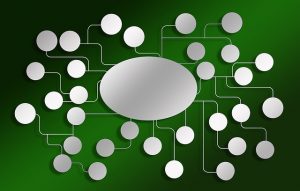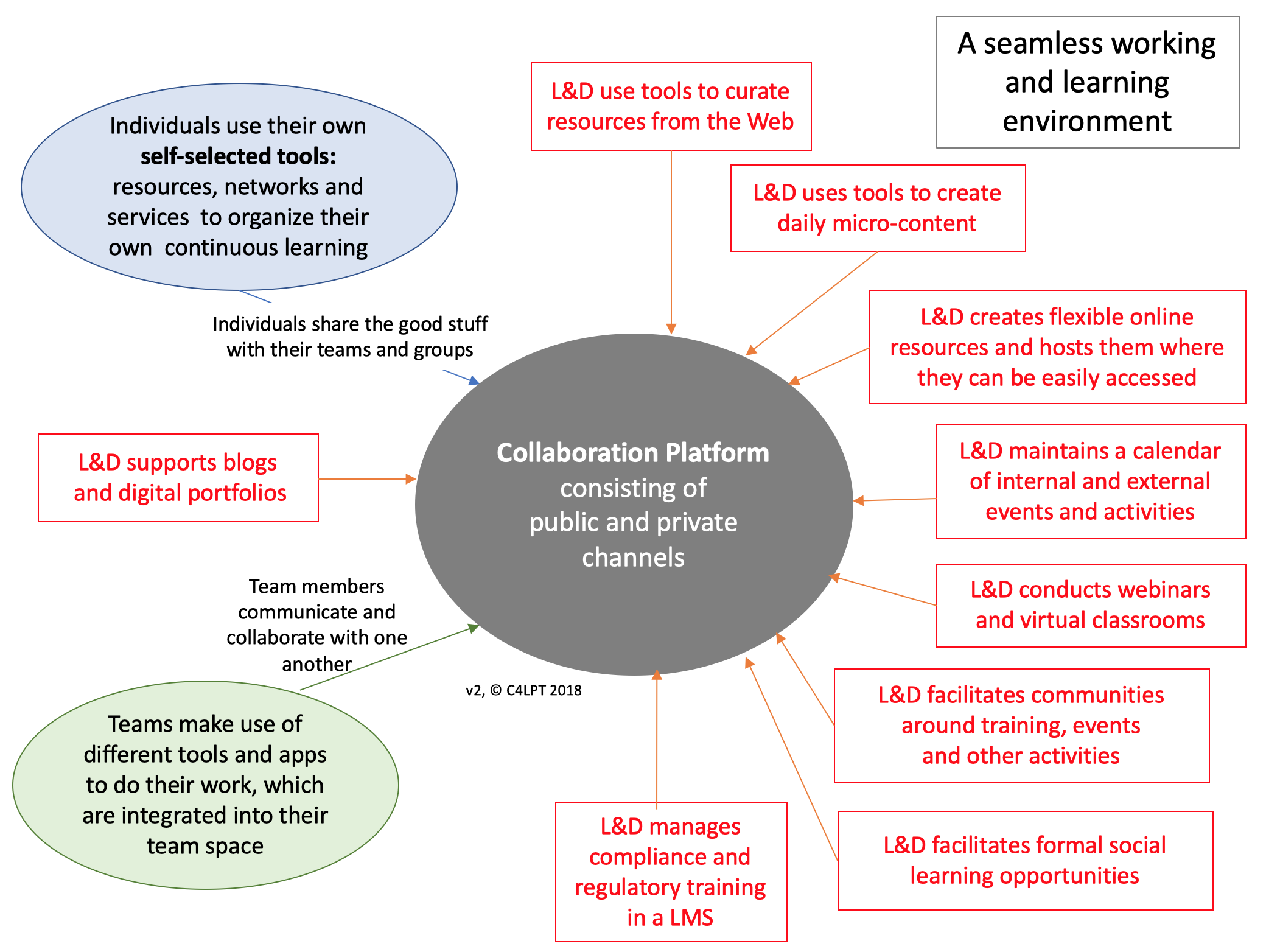 At the heart of a seamless working and learning environment is your organisation’s social collaboration platform.
At the heart of a seamless working and learning environment is your organisation’s social collaboration platform.
A collaboration tool, like Slack, that supports team working is ideal for this, as it used by teams and groups to underpin their work. Slack has become very popular tool and has rapidly risen up the Top Tools for Learning list. In May 2018 Slack announced it had 8 million daily active users across 500,000 organizations, with 77% of the Fortune 100 having adopted it. Meanwhile Microsoft Teams (the team hub space within Office365) is also increasing in popularity, and it is said that Teams is the fastest growing business app in Microsoft history.
An additional advantage for using a platform like Slack (or Microsoft Teams) is that they support apps and integrations from a wide range of tools and platforms, which means that you can integrate all your learning activities and resources right inside the workspace (as shown in the diagram below).

There are further significant advantages of creating a seamless working and learning environment:
- It means that your thinking about “learning” is not constrained by a dedicated learning platform that perpetuates the traditional course approach. In other words, using a collaboration platform lets you think differently not just about what you do but how you measure the success of your learning initiatives. That is, it helps to think in terms of performance outcomes – i.e. what individuals need to be able to do as a result – rather than on learning outcomes or course completions.
- It means you can start from a position of thinking about the people in your organization and how you can encourage connections and engagement between them – rather than focusing on creating content.
- It means that all the knowledge and experiences shared in more structured events are not locked away in a separate learning system.
- It means that it’s not just about internal experts telling people what they should do or know, but about peers sharing their thoughts and experiences, and learning from one another.
- It means that an individual’s personal activity stream will consist of all their subscribed activity streams – from all their formal learning initiatives as well as from their work teams and communities too.
- It means that “learning” is no longer seen as a separate activity from working; and that for the first time it can truly become a continuous, social experience in the workflow
Last updated: August 6, 2019 at 6:40 am